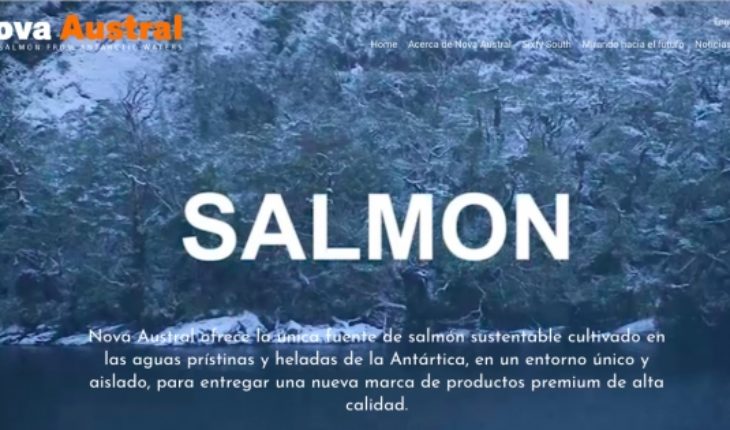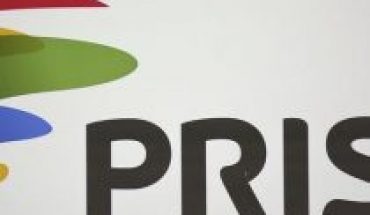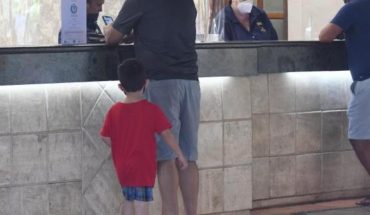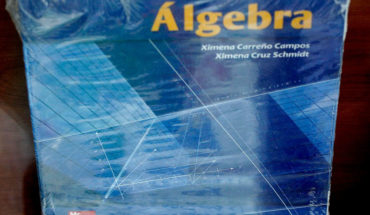After the publication of Salmon Leaks: the adulterations of Norwegian salmon Nova Austral in the pristine waters of Chilean Patagonia all rushed to the salmon company, of Norwegian capitals, which has installed its aquaculture centres in the Magellan region and Chilean Antarctica, in the interior of Alberto de Agostini National Park.
Without abandoning to date the claim to expand its facilities to the Cabo de Hornos Biosphere National Reserve – a natural sanctuary recognized by Unesco as a place to reconcile biodiversity conservation with sustainable use – Nova Austral, which until yesterday was shown as a role model in the salmonid industry with its antibiotic-free fish and its sustainable behavior, today it faces a criminal investigation by the Public Prosecutor’s Office, a recent civil complaint in the First Court of Letters from Puerto Montt who opened a Pandora’s box; and a precautionary measure after seabed adulteration is checked to hide the anaerobic condition of one of its centres.
But the turbulent waters didn’t stay there. The company also received an angry reaction from members of Congress, who demand stricter measures for the industry; he was disassociated from the position of General Manager, Nicos Nicolaides, who told El Mostrador that the conclusions of the investigation of this medium were based on errors of interpretation; Regional manager Drago Covacich, the Illustrious Son of Porvenir, and the prestigious international certifists Aquaculture Stewardship Council (ASC) and Monterey Bay Aquarium Seafood Watch (MBASW) also toured the mark, after announcing publicly harsh measures.
ASC, along with requiring Nova Austral to immediately remove the certification logo from its products, called on them to inform all of their customers of the cessation of the license and to stop all sales of products that use the ASC brand, including “any product with a chain of custody number.” MBASW’s reaction was even more intense. Ryan Bigelow, senior manager of the Monterey Bay Aquarium Seafood Watch program, advised consumers to avoid purchasing Nova Austral’s flagship product, Sixty South salmon. MBASW is a program that helps consumers and businesses choose seafood that are grown or fished in a way that supports a healthy ocean.
Add to the foregoing a report from Bloomberg that Nova Austral’s overseas bonds plummeted to 60 cents per dollar. The article further contends that Harold Meyer – a board member and director of Bain Capital (the company’s controller with Altor Funds) – argued at a video meeting called that the investigation identified “unacceptable deficiencies”.
As the volume of national and international reactions around this scandal increased, the background has also multiplied. This newspaper investigation also found how Nova Austral adulterated the seabed to deceive environmental reports, putting at risk, or causing “immimente harm” – according to Supreme Court case law in the April 24 ruling 2017- to the environment and people’s health.
Also the documents presented in the first article of El Mostrador were supplemented by regulatory oversights of Magellan, discovering that adulteration, manipulation and deception did not only reach mortality, but the entire chain of production: from planting, harvesting, silaging and plant supply.
Seabed adulteration
As part of the processing of the bill seeking the recovery of the seabed where intensive salmon farming operates, the national director of Sernapesca, Alicia Gallardo, told the Chamber of Deputies that, to date, 168 salmon farming centres are under anaerobic conditions, meaning that the accumulation of sediments products of the fae and the food not consumed by the fish, has degraded to such an extent the seabed, significantly reducing the amount of dissolved oxygen in the water column.
Outside of the damage to marine biodiversity resulting from this pollution, the anaerobic condition of the centres is, together with bacterial and parasitic diseases – health problems that to contain them the industry pours to the sea every year tons of antibiotics and antiparsitics (insecticides)-, one of the major problems of salmon farming, because by obtaining a negative environmental report (INFA), companies cannot operate on site, with the consequent negative impact on their finances.
On 17 July this year, the Superintendency of the Environment decided to apply against the company Nova Austral a precautionary measure after confirming that the company, of Norwegian capitals, had adulterated the seabed of the Aracena 14 centre – located north of Sholl cove in the Captain Aracena island area- to artificially reverse the anaerobic condition of the marine substrate and thus trick the authority and maliciously obtain permits to replant fish, in a place where biological conditions do not they allowed it.
Aracena 14 completed its last production cycle in November 2018, after which it was unable to carry out a new fish planting, due to the result of INFA in April 2019. For a center to obtain a positive INFA with oxygen conditions that allow marine life, multiple parameters measuring sediment and water column must be met. When the sea phono is literally dead as a result of the decaying sediments and the product of the above arises in the background the dreaded bacteria Beggiatoa – living in anaerobic conditions and whose cell composition is composed of sulfur – there is nothing that do, literally. It can take up to decades for the sea to recover naturally.
According to various sources of the aquaculture world, the most commonly used, but prohibited, ways to change all negative parameters, are “cadeneo”, which consists in the displacement of decomposed sediments – as if they were a plow – , spreading pollution to healthy seabeds; dredging, which is the suction of the seabed; or rightly the burial, which is nothing more than throwing tons of sand and stones on the seabed, burying the bad, and with it what could be recovering.
Nova Austral chose to bury. This is how he managed to get the bottom from anaerobic to aerobic, i.e. from bioviable to suitable for re-planting in less than 2 months. The evidence obtained by the sernapesca Magallanes supervisory trainers and contained in the resolution of the precautionary measure of the Superintendency of the Environment (SMA) was devastating. They compared the underwater filming between the Infa on April 16 of this year, which was rated as anaerobic and the one made on June 7, which it described as aerobic.
In the following image can be seen as in the transecta, engraved April 6, the sea floor was irregular and the June at the same point, the ground was even and full of stones.
The action to bury the seabed was detected in a complementary way through an on-the-spot audit carried out by the officials of Sernapesca de Magallanes, Santiago Astete Carrillo and Francisco Calderón to the Melinka barge was discovered machinery that had not been reported in the cargo manifestos by Nova Austral. Calderón informed the director of Sernapesca regional, Patricio Díaz, on July 15 that Nova Austral had modified the archive to hide a number of materials that had been moved to the centres on the boat’s voyage (leased by Nova 23-29 March this year.
Marine Duty’s overlapping works and protocols against Greenpeace
After reviewing the machinery, the auditers warn “omission in the information about dispatch to a Drag Flow pump culture center that serves for pumping sand, large artifact and 100 big Bag with “materials” (50 tons), which is presumed to be contained sand. Thus, by omitting this information, the company made the figure of delivery of non-reliable information.”
The pump as well as the control board and other materials are owned by Marine Duty. This company domiciled in Viña del Mar is defined on its website as a “company that provides high-level underwater and underwater services according to the scientific and technological avant-garde”.
Reserved sources from the Magellan region, knowledgeable of Nova Austral’s internal activity, pointed out to El Mostrador, that the evidence obtained in July by Sernapesca and that links Marine Duty to Nova Austral on Aracena 14 – where the seabed was buried – is only a picture of an old relationship. According to the sources each time a centre finishes its harvest cycle and what is known as “sanitiary rest” is available, – short period of a couple of months where the sea is supposed to recover naturally – all workers must leave the centre to operate Marine Duty.
During the investigation, El Mostrador accessed an email from Magellanic sources, dated March 20, 2017, in which Arturo Schofield – the same person who sent the email to the directors of centers instructing the manipulation of the salmon mortality statistics in 2016, and still working as a production manager at Nova Austral – sends an email to Drago Covacich – the former regional manager and top leader of gre.salmon workers in Magellan – and staff in general, where they are instructed to act in case they are visited by Greenpeace, and also block all access to restricted places.
In the precautions part of Greenpeace’s arrival, Schofield says: “In case of the southern area immediately suspend the duties of Maryn Duty (Marine Duty). Call Management immediately in case they appear in any area.”
The underwater services company Marine Duty, which according to its own website provides services to Salmones Aysén; Australis Seafoods, from Chinese capitals; (a) Aqua Chile; and Marine Harvest, of Norwegian capitals, is owned by Jorge Aldayuz, who in turn owns and general manager of the aquaculture consultancy Doppler S.A.
Doppler S.A. is awarded at least 10 projects of the Fisheries and Aquaculture Research Fund, FIPA, under Subpesca, the superintendent that has the responsibility to monitor the seabed.
It is noteworthy that among the projects that Doppler, whose owner is also Marine Duty, includes the prospecting and characterization of new crop sectors and AAA in the XII Region of Magellan, whose contract appears with advance completion.
Despite the efforts, The Desk failed to make contact with Jorge Aldayuz, as all Marine Duty phones such as Doppler and the respective electronic contact boxes either lead to anything or are disabled. Of this, an attempt was made to contact the new manager of Nova Austral, Francisco Miranda, who was sent questions regarding the relationship between salmon company and Marine Duty, without results until the end of this edition.
As for the plan to block access to Greenpeace, Estefanía González, coordinator of the oceans area of the international environmental organization, stated that “if it has to be prepared when an organization like Greenpeace visited the area on a boat and avoid at all costs that we could document what is going on in that salmon farm, we don’t want to imagine what they were doing when the auditers went.”
“It was my turn to be on Greenpeace’s ships. I visited the different cages in operation of Nova Austral and they were cages that were falling apart. There were some pretty sunken in the sea, the whales were transiting, literally in the middle of the company’s operations and we were with an underwater drone, documenting the seabed and we found that the bottom around the cages, had nothing to do with biodiversity,” Gonzalez said.
Norway and Chile: a thin column of water
On 28 March 2019, the InterContinental hotel in Santiago hosted the Chilean-Norway Business Summit (Chile-Norway business 2019), in which politicians and entrepreneurs from industrial sectors of both countries discussed the future of aquaculture. The day, organized by Innovation Norway and The Sofofa, was preceded by Norway’s king Harald V, whose visit to Chile was highly questioned by environmental and scientific organizations, because it was interpreted as an obvious lobbying action, on the part of the Norwegian crown for Nordic capital companies. For the communities of Puerto Williams the visit was a specific support for Nova Austral, which at that time was under controversy for its intention to move its salmon fattening plants to the Cape of Horn Biosphere Reserve.
Days after this meeting, Norway’s ambassador to Chile, Beate Stiro, in an interview with the portal Aqua.cl, vehehedely argued that “the Norwegian government, then, expects Norwegian companies to fully respect the laws and regulations that apply in the country they operate. In addition, we expect all our companies to operate on good and reasonable business principles, and to be aware of their responsibility to nature and communities in the area where they carry out their activities.”
Ambassador Stiro’s phrase, months before the Nova Austral scandal, was in complete harmony with another sentence, delivered by the Secretary of State of the Ministry of Trade, Industry and Fisheries, also visiting Chile, in December 2018. Also to the portal Aqua.cl, the Norwegian minister said regarding the salmonid escape from Marine Harvest that “every Norwegian company must understand that they are representing a country, whether it produces fish, tyres or whatever. And it not only affects us as Norwegians, but it impacts the image of the industry.”
In the same vein of this business ethics orientation, Bloomberg on Thursday concluded that Harold Meyer, director of the investment fund Bain Capital – the controller of Nova Austral with Altor Funds – argued that the revelations after the investigations, seemed to him ” unacceptable deficiencies.”
On 2 February 2019, in Oslo, Norway, Meyer participated in the board session of Pesquera Cabo Pilar, S.. As recorded in the Notary of Roberto Cifuentes Allel, where on 7 February of the same year the board session, held in Oslo, was transferred to public deed, held in Oslo, five days earlier. The session renewed the board where Meyer remained director and Yngve Myhre was unanimously elected as president. As the first activity in that position, Myhre reported that with the same date and through private instrument Nova Austral S.A. had acquired 100 percent of the shares of Pesquera Cabo Pilar.
In virtue of the emails accessed by El Mostrador, this medium could find that Myhre, together with the denlinked Nicos Nicolaides and Drago Covacic, and the current manager of the company, Francisco Miranda, were frequent recipients of a report consolidated weekly that was sent to him from production management for his exclusive knowledge.
In these reports it is clear that the highest authorities in both Norway and Chile – as is the case with Francisco Miranda – were in full knowledge of the high mortality rates, as well as the actual figures of the death of salmon and their causes , unlike Chilean regulatory authorities that regularly received false reports.
The second week of July this year, when he had already been in the Nova Austral scandal for a couple of weeks, Yngve Myhre was in Chile and met with other senior authorities of the company with the national director of Sernapesca, Alicia Gallardo, in a quote of which he has not yet registration is recorded on the Lobby’s platform. At that meeting, as alleged in the civil complaint that recently entered the First Court of Letters of Punta Arenas for “facts constituting violations of the General Law on Fisheries and Aquaculture”, Norwegian executives “acknowledged that there had been a manipulation in order to sub-report mortality by the company, which would have been committed behind the board.”
After this meeting, the disengagement of Nicolaides and Covacich was reported and the promotion of Miranda as new general manager, who was aware and recipient for several months of the reports booked with the mortality figures without Adulterate.
On July 11, Miranda provided in PDF files “real and detailed information on planting, mortality and stockforefor each of its centers”.
This information was worked hard in recent weeks by staff of the Regional Directorate of Sernapesca de Magallanes, who opened a real Pandora’s box, stating that Nova Austral’s deceptions far outweighed the adulteration of because the manipulation of statistics affected the entire salmon production chain, of the company that until a few months ago was the “symbol child” of national salmon farming.
Everything, all false
In the text of the complaint, the regulatory body states that the company Nova Austral “has not denied the validity of the mortality form, fish planting data or the emails referred to in the report of El Mostrador”, and that, for its part, they were able to confirm that the double co. exhibited by this means with the adulterated data “effectively matches what the company reported” to the auditing body.
Once the information was checked, Magellan’s management came to the conviction that “the false and unreliable information given to this service actually covers the following parameters: mortality, planting, harvesting and sourcing.
According to the complaint “It is the case to note that mortality data are very relevant for assessing the health and environmental condition of a salmon farm. So much is its importance, that at the end of the production cycle of a center, culminating in the harvest of the entire campus after 18 to 24 months, the mortality of the cycle is analyzed in conjunction with other parameters.
“This is how high mortality continues, “will have a significant impact on a biosecurity score that penalizes the planting of the next cycle, and should reduce the sowing and density of fish in the growing centre. Hence, the fundamental reason for the illegality, since clearing up mortality meant nothing less than affecting the future production of the company (this is consistent with email from Operations Manager Mr. Arturo Schofield, revealed in “The Desk”)
The information disclosed by the Magellan regional management is far from the public information made by the company Nova Austral, after the meeting with the national director, in which through different media they recognized that they had misinformation in the case of a facility and only the last cycle.
On July 18, the electronic medium Salmonexpert published the report “Forensic Research” in which it was announced that Nova Austral “has given explanations to investors of the Oslo Stock Exchange, where mantia $300 million bond.”
Two days before these explanations in which it was said that the company was still with solid liquidity, María González Calvet of the US law firm Ropes & Gray, described the results of Nova Austral’s independent investigation for which it was done advise in order to “ensure the integrity of our review” by a forensic engineering firm, FTI Consulting.
According to Ropes & Gray, the forensic firm processed “approximately two and a half million emails and attachments using advanced analytical technology, where to date it has reviewed 22,000 e-mails, in addition to conducting 23 telephone and in-person interviews with a variety of Nova Austral contributors in multiple locations.
The conclusion was that “our investigation identified certain irregularities in the information the company provided to Sernapesca during the last production cycle.”
The lawyer detailed that “our investigation confirmed that, in some cases, the company erroneously reported mortality rates to Sernapesca to stay below the 15% legal threshold.”
These conclusions could not be further from the conclusions of the audit body, after analysing the documents provided by Sernapesca itself, in which it was concluded that adulterations affected all the centres of the company and in at least three cycles 2016-2018, 2017-2019 and 2018-2019.
Differences in millions
In addition to the actual and reported mortality spending all cycles, it was found that the deaths reported in the sum amounted to 1,475,683, but the mortality figures were much higher, reaching 3,583,933
With regard to the planting of fish, the complaint states that “with regard to the subreported planting condition, indeed the reports of El Mostrador account for excess undeclared planting to Sernapesca, in several of the centers of the company”.
Once the data of all the centers were checked, it was found that Nova Austral manipulated the data of all the centers, placing many more fish in the cages than those officially declared.
And with regard to the harvest, the same thing. All adulterated. “Harvesting is the result of planting minus lost. As these latter variables are altered, it is clear that the harvest will not equally correspond to what is stated,” reads the document.
Such was the level of statistical adulterations in computer systems, that even the general manager, Francisco Miranda, who was aware of the actual figures before El Mostrador unhighlighted the case, in emails to the Directorate General confesses that even he cannot claim that the data he is providing is entirely true.
In an email of July 11 sent by Francisco Miranda to Marcela Lara, deputy director, in point 3 referring to the seeding Miranda states that “we are aware that the subscriber cannot attest to the authenticity of its content”. The same is done in point 6 regarding the daily silage register that “silage log is accompanied. We note that the subscriber cannot attest to the authenticity of its content.
While the criminal investigation in the hands of Magellan regional prosecutor Eugenio Campos – the same one investigating fraud in Carabineros – is just beginning and even though the evidence is overwhelming, as Bloomerg points out, it could all end in a symbolic Fine.
The series of incidents that has occurred in the industry “threatens to give salmon producers a reputation they can’t afford, of cowboys who don’t take the rules seriously. While this new scandal has led to calls for stricter regulation, Nova Austral is likely to have been fined only about $200,” or just over 141 million pesos.





